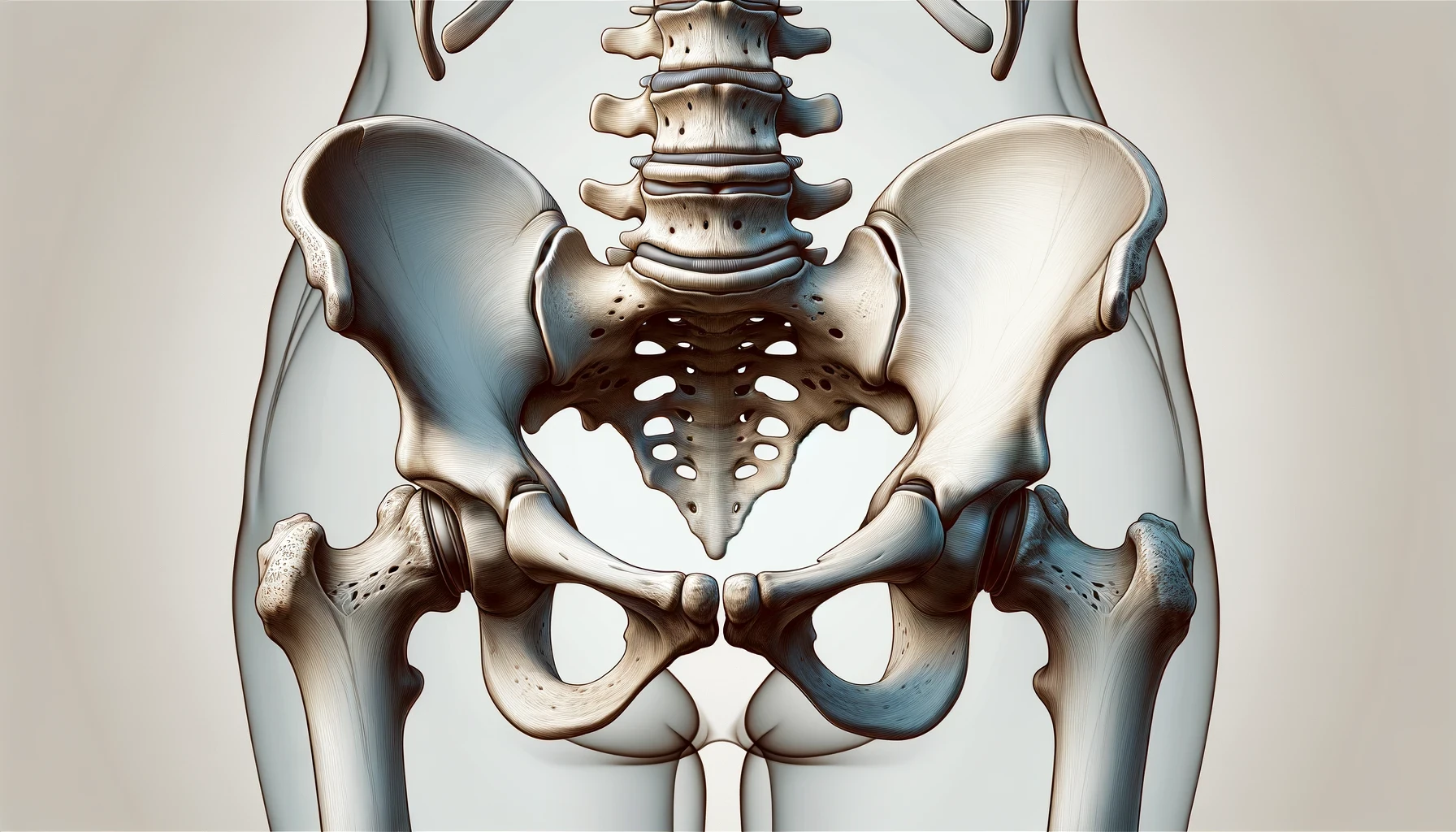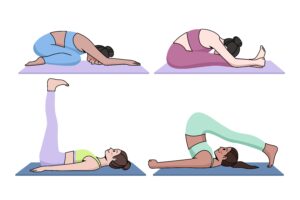Sleeping Position Sacroiliac Joint Pain Relief
SI joint pain can make it difficult to sleep at night. How your sleep position affects your SI joint is the key to better sleep. Learn more about sleep ergonomics in sleep Position Sacroiliac joint pain Relief and avoid sleepless nights from SI Joint Pain.
Why Your Sleeping Position Is Important for SI Joint Pain
Your sleep position affects your SI joint health. The SI joint is a load-bearing fulcrum for movement. This joint may become inflamed and painful due to misalignment during sleep. This discomfort may disturb sleep and cause body-wide muscle tension and misalignment. Like ripples from a pebble in water, a misaligned SI joint can cause broad musculoskeletal problems.
Ergonomic sleep is essential for reducing SI joint pressure. It supports and protects the joint. Right sleep position maintains your spine’s curve and decreases SI joint stress for healing and recovery. Choosing an aligned sleep position relieves pain and promotes long-term SI joint health. Sleep is essential for managing SI joint pain and health.

Anatomy Meets Comfort: The Best Sleeping Positions
Side Sleeping with a Twist
Side sleeping, when done with thought, can provide a haven for those suffering SI joint pain. This position may be similar to the natural fetal position, which is both comforting and protective.
- How to Get This Position: Lay on your favorite side and bring your knees toward your chest just enough to relieve a little tension out of your SI joint but not too much you feel constricted. Keep your lower back slightly arched in the natural position and avoid pulling up too tightly, as this may prevent breathing and stiffness.
- Role of Pillows: Add more support to this position with a firm, full-length body pillow or a few strategically placed smaller pillows along your back. This setup keeps you in alignment and keeps you from rolling onto your back or stomach – positions that can cause SI joint pain.
Side sleeping with a twist provides support and comfort, hugging your body while preserving the natural alignment of your SI joint.
The Supine Solution: Back Sleeping Done Right
Back sleeping is often touted as the best position for spinal health, and with modifications can provide some relief for SI joint pain sufferers.
- How to Create the Perfect Back Sleeping Environment: Start with a pillow that supports your natural curve without pushing your head too high. The goal is to keep your spine neutral. Put a pillow under your knees to elevate them slightly, this flattens the lower back from the bed and also lessens pressure on the SI joint.
- How Elevation Helps: Elevating the knees relieves sacrum pressure and provides a tension-free rest for the SI joint that feels like floating. This distributes body weight evenly, reduces pressure points and relaxes muscles.
The supine solution isn’t back lying; it’s not supine. it’s a strategic approach that turns your bed into a healing space, offering the support needed for overnight recovery and relaxation.
It is a Gentle Incline: Sleeping on a Slight Slope
Another sleeping position that can provide relief for SI joint pain sufferers is lying down on a gentle incline. This position may be especially helpful for those who find lying flat uncomfortable or for those who suffer from exacerbated symptoms when lying completely horizontal.
- Creating the Incline: Use a wedge pillow or an adjustable bed to create a slight incline from the feet up to the head. This elevation should be gradual to avoid bending at the waist which could increase the pressure on the SI joint.
- Benefits of Elevation: The inclined position can relieve some of the pressure on your spine and SI joint by distributing your body weight more evenly. Additionally, it reduces inflammation and might be useful for people with similar problems like heartburn or respiratory issues that disturb sleep.
Try incorporating this position into your nightly routine. It allows for deeper, more restful sleep. This helps your body recover from everyday stress and strain.
Purple Pillow: The Sleep Revolution You Didn’t Know You Needed
Sleeping Positions to Avoid
When it comes to managing SI joint pain, not all sleeping positions are created equal. Some positions worsen the pain, causing an evening of soreness and a day of soreness. Identifying these problematic positions and explaining why they may be harmful to SI joint pain sufferers is important.
Stomach Sleeping Strain
Stomach sleeping (or the prone position) is one of the least desirable positions for SI joint pain. Sleeping on your stomach leads to your back to incline upwards, placing more strain on the sacroiliac joint.
- The Lower Back Arch: This can lead to an exaggerated lordotic posture (inversion of the lower back) that can strain ligaments in the SI joint.
- The Neck Twist: Also, you must turn your head to one side to breathe, which can twist your cervical spine and transfer that twist down your thoracic and lumbar regions, impacting your SI joint.
This is the Full-Extension Flat Back
Sleeping on your back may be best advised, but lying flat without any knee support can also cause or exacerbate SI joint pain.
- Missing Support: If you do not have a pillow under your knees, the lumbar region can overarch and strain the SI joints.
- Pelvic Tilt: A flat position can also cause the pelvis to tilt so that it adds extra stress to the SI joint if your mattress does not provide adequate support.
The Unbalanced Side Sleeper
Side sleeping can be helpful with proper support, but can push the pelvis out of alignment, twisting the spine and straining the SI joints if not supported.
- The Hip Drop: Sleeping on one side without support can cause the top hip to roll forward, causing torsion on the SI joint.
- The Leg Dangle: Letting the top leg hang down over the lower leg can pull on the SI joint, causing it to move out of position and pain.
High-Leg Crossover
Others sleep on their side in a half-stomach, half side position and often cross one leg over the back in a figure-four pattern.
- Pelvic Torque: This position can torque the pelvis and cause significant misalignment, resulting in SI joint irritation.
- The Pressure Point: The top leg’s weight on the bottom leg creates pressure points and inhibits circulation – not helpful for healing or pain relief.
In summary, avoidance of certain positions is important but listening to your body is important as well. Because comfort varies by individual, experiment to find a sleep position that reduces your SI joint pain. Blend this advice with what works for you to get more sleep.
The Making of a Sleep Haven
Sleeping well is important when you have SI joint pain. Here are some bullet points to consider when building your dream sleep haven:
- Selection of Mattresses: Choose a mattress that offers support and pressure relief to help relieve stress on the SI joints. Consider a medium-firm mattress that provides enough support for many but remember, personal preference and comfort are important factors.
- Configuration of Pillows: Use a head pillow that aligns your neck with your spine. When side sleeping, place a pillow between your knees to keep your hips balanced. Consider a small lumbar pillow or a rolled towel under your back if lying down flat to maintain the curve of the spine.
- Bedding Considerations: Choose breathable, natural fibers to regulate temperature and keep you cool through the night. Make sure your bedding is secure enough to avoid it from bunching up and causing discomfort or causing alignment problems.
- Room Atmosphere: Black out curtains or even use a sleep mask to make the room dark so your brain knows it is time to sleep.
Keep the bedroom cool and comfortable, 60-67 degrees Fahrenheit (15-19 degrees Celsius). - Noise Control: Use white noise machines or earplugs to muffle disruptive sounds. If total silence isn’t your thing, try ambient sounds or some quiet, calming music.
- Technology-Free Zone: Remove electronic devices that emit blue light and interfere with sleep. Keep televisions, computers and smartphones out of the bedroom to reinforce the association that the room is for sleep only.
- Relaxation Techniques: Calm yourself before bed by reading, meditating, or breathing exercises. Try some gentle stretching or yoga poses to release tension and prepare for sleep.
- Aromatherapy: Aromatic scents like lavender or chamomile calm down and promote sleep. Consider diffusers, scented candles (use safely) or essential oil roll-ons for these scents at bedtime.
Lifestyle Adjustments for Better Sleep Quality
When it comes to managing SI joint pain, optimizing your daytime habits is just as important as creating the right sleep environment. Some lifestyle modifications that could enhance your sleep quality: Here are a few tips.
- Mindful Movement: Introduce gentle exercises such as walking or swimming into your day to keep the joints mobile without overstraining them. Practice low-impact yoga or Pilates to strengthen the core muscles that support the SI joints.
- Posture & Ergonomics. Notice how you sit, stand, or perhaps move during the day. Set up your workspace ergonomically to minimize stress on your SI joint, including chairs that provide adequate lumbar support.
- Stress Management: Try practicing stress-reducing activities like meditation, deep breathing or hobbies that relax you. Manage workload & take breaks throughout the day to reduce physical and mental stress.
- Diet and Hydration: A well balanced diet that has anti-inflammatory foods can minimize inflammation within the body. Hydration is essential for joint health and body functions.
- Sleep Hygiene: Begin a sleeping routine: sleep at exactly the same times each day and awaken at the exact same times. Develop a pre-sleep routine that signals your body it’s time to wind down (read or a warm bath).
- Weight Management: Keep a healthy weight to minimize the extra load on your joints, such as the SI joint. Make a weight management plan with a healthcare provider or nutritionist if necessary.

Sacroiliac Joint Pain Relief
Finding the right position isn’t the only trick in sleeping with SI joint pain; mastering the art of sleeping with SI joint pain requires practice as well. It’s about creating an environment and routine that accommodates your body. With these strategies, you can turn your nights from painful to peaceful. And remember, your journey to a good night’s sleep need not come alone. For more resources, expert advice, and support to help you overcome SI joint pain visit our Web site.
Don’t let discomfort ruin another night. Start applying these tips tonight and wake up to a more comfortable tomorrow. Consult health professionals for advice and browse our sleep aids tailored to your needs for optimal comfort.
Best Sleeping Position for Lower Back Pain: Comfort and Relief




